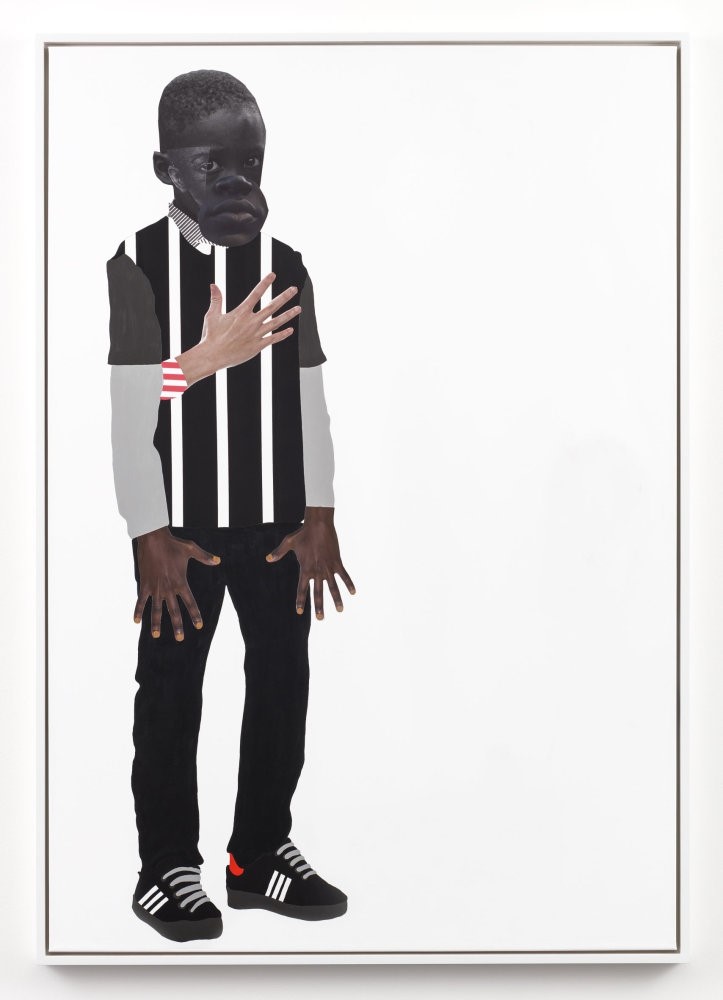
Deborah Roberts, Ulysses, 2019. Mixed media and collage on linen, 65 × 45 inches (165.1 × 114.3 cm). Promised gift of Fotene Demoulas and Tom Coté. Courtesy Stephen Friedman Gallery, © Deborah Roberts
Through textured use of digital and found images collected from print media and the Internet, Deborah Roberts creates figural collages that examine constructions of race, gender, and Black childhood in the United States. Her work negotiates between the real and the possible forms of representations of Black children (particularly girls), while also seeking out what modes of self-representation, agency, and self-making are available and accessible to Black youth.
For Roberts, collage is a practice of envisioning new and liberating forms of social life, especially for Black Americans. She employs found media to contend with dominant portrayals and narratives of Black youth, narratives that she teases out, challenges, and subverts through her use of collage. In works like Ulysses, Roberts combines cutout images with drawings, painted addendums, and detailed patterns over a blank background. Each component to the collage draws from different source material, transforming the figure into a layered assemblage of images, histories, and ideals that compose the character, as though wrapped in and by imagery. This connotation doubles the symbolic meaning of Roberts’s works, which reference and honor the particular social and political conditions under which Black youth struggle to retain their humanity and agency over their own futures. In Ulysses, Roberts fashions the figure of a young Black boy who stands demurely to the left of the canvas, appearing to be held back or in place by an unknown white hand. This presence of the white figure, even fragmented and disembodied, is an important illustration of Roberts’s interest in how representations of Black youth are often filtered through a dominant white gaze.
Ulysses joins other works in the ICA’s collection by artists who employ novel approaches to race and representation, such as Toyin Ojih Odutola, Tschabalala Self, and Paul Mpagi Sepuya. This work enriches the ICA’s strong holdings of collage works and portraiture.